We put the Google Pixel 6 Pro through our rigorous DXOMARK Display test suite to measure its performance across six criteria. In this test results, we will break down how it fared in a variety of tests and several common use cases.
Overview
Key display specifications:
- 6.7-inch AMOLED screen
- Resolution: 3120 x 1440 pixels (512 ppi)
- Aspect ratio: 19.5:9
- Refresh rate: 120 Hz
Scoring
Sub-scores and attributes included in the calculations of the global score.
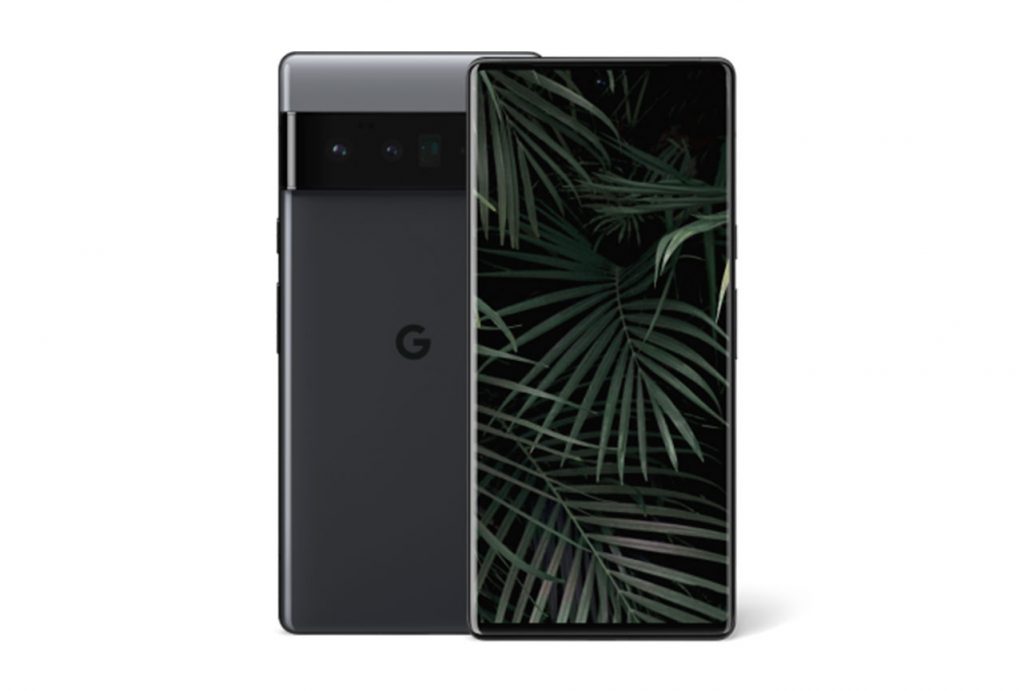 Google Pixel 6 Pro
Google Pixel 6 Pro

130
display
134
Samsung Galaxy S24 Ultra
Best: Samsung Galaxy S24 Ultra (164)
143
Google Pixel 10
Best: Google Pixel 10 (167)
108
Samsung Galaxy S25 Ultra
Best: Samsung Galaxy S25 Ultra (167)
159
Google Pixel 7 Pro
Best: Google Pixel 7 Pro (164)
Position in Global Ranking

112
th
1. Google Pixel 10 Pro XL
161
2. Samsung Galaxy S25 Ultra
160
4. Samsung Galaxy S25 Edge
158
10. Google Pixel 10 Pro Fold
156
10. Samsung Galaxy S25 FE
156
13. Samsung Galaxy Z Fold7
155
13. Samsung Galaxy Z Flip7
155
13. Samsung Galaxy S24 Ultra
155
17. Samsung Galaxy Z Fold6
154
17. Samsung Galaxy S24+ (Exynos)
154
17. Samsung Galaxy S24 (Exynos)
154
24. Google Pixel 9 Pro Fold
152
26. Apple iPhone 17 Pro Max
151
26. Apple iPhone 15 Pro Max
151
34. Apple iPhone 16 Pro Max
150
34. Samsung Galaxy Z Flip7 FE
150
34. Samsung Galaxy Z Flip6
150
44. Samsung Galaxy S23 Ultra
148
50. Samsung Galaxy A55 5G
147
53. Apple iPhone 14 Pro Max
146
55. Samsung Galaxy S24 FE
145
59. Samsung Galaxy Z Flip5
144
62. Asus Zenfone 11 Ultra
143
62. Samsung Galaxy A35 5G
143
67. Apple iPhone 13 Pro Max
142
67. Samsung Galaxy Z Fold5
142
73. Samsung Galaxy S23 FE
140
78. Xiaomi Redmi Note 14 Pro+ 5G
139
79. Honor Magic4 Ultimate
138
90. Samsung Galaxy S22 Ultra (Snapdragon)
135
90. Xiaomi Redmi Note 13 Pro Plus 5G
135
95. Samsung Galaxy S22+ (Exynos)
134
98. Samsung Galaxy Z Flip4
133
98. Samsung Galaxy S22 Ultra (Exynos)
133
98. Samsung Galaxy S22 (Snapdragon)
133
98. Vivo X80 Pro (MediaTek)
133
103. Samsung Galaxy S22 (Exynos)
132
108. Samsung Galaxy S21 Ultra 5G (Exynos)
131
108. Vivo X80 Pro (Snapdragon)
131
112. Apple iPhone 13 mini
130
112. Samsung Galaxy Z Fold4
130
112. Samsung Galaxy S21 Ultra 5G (Snapdragon)
130
112. Samsung Galaxy S21 FE 5G (Snapdragon)
130
123. Samsung Galaxy A54 5G
129
127. Apple iPhone 12 Pro Max
127
131. Vivo X60 Pro 5G (Snapdragon)
126
148. Motorola Edge 30 Pro
123
152. Apple iPhone 11 Pro Max
122
152. Motorola Edge 40 Pro
122
156. Apple iPhone SE (2022)
120
162. Samsung Galaxy A52 5G
114
164. Motorola Razr 40 Ultra
113
167. Crosscall Stellar-X5
109
168. Samsung Galaxy A53 5G
108
172. Crosscall Stellar-M6
101
175. Samsung Galaxy A22 5G
82
Position in Ultra-Premium Ranking

78
th
1. Google Pixel 10 Pro XL
161
2. Samsung Galaxy S25 Ultra
160
4. Samsung Galaxy S25 Edge
158
9. Google Pixel 10 Pro Fold
156
10. Samsung Galaxy Z Fold7
155
10. Samsung Galaxy Z Flip7
155
10. Samsung Galaxy S24 Ultra
155
13. Samsung Galaxy Z Fold6
154
13. Samsung Galaxy S24+ (Exynos)
154
18. Google Pixel 9 Pro Fold
152
20. Apple iPhone 17 Pro Max
151
20. Apple iPhone 15 Pro Max
151
26. Apple iPhone 16 Pro Max
150
26. Samsung Galaxy Z Flip7 FE
150
26. Samsung Galaxy Z Flip6
150
33. Samsung Galaxy S23 Ultra
148
40. Apple iPhone 14 Pro Max
146
44. Samsung Galaxy Z Flip5
144
47. Asus Zenfone 11 Ultra
143
50. Apple iPhone 13 Pro Max
142
50. Samsung Galaxy Z Fold5
142
56. Honor Magic4 Ultimate
138
63. Samsung Galaxy S22 Ultra (Snapdragon)
135
65. Samsung Galaxy S22+ (Exynos)
134
67. Samsung Galaxy Z Flip4
133
67. Samsung Galaxy S22 Ultra (Exynos)
133
67. Vivo X80 Pro (MediaTek)
133
74. Samsung Galaxy S21 Ultra 5G (Exynos)
131
74. Vivo X80 Pro (Snapdragon)
131
78. Samsung Galaxy Z Fold4
130
78. Samsung Galaxy S21 Ultra 5G (Snapdragon)
130
86. Apple iPhone 12 Pro Max
127
99. Apple iPhone 11 Pro Max
122
101. Motorola Razr 40 Ultra
113
102. Crosscall Stellar-X5
109
Pros
- Faithful colors, especially indoors and outdoors in shade
- Smooth when gaming, browsing, and in the gallery app
- Acceptable brightness in most tested conditions
- Well-managed judder and frame drops when watching videos
Cons
- Brightness is too low when watching HDR10 content
- Lacks brightness and shows a strong orange cast under sunlight
- Visible steps during adaptation to changes in lighting environment
Despite slightly low brightness at its default settings when playing videos, the Google Pixel 6 Pro put in a satisfactory performance overall in our Display protocol tests. It has very good color and a comfortably smooth touch.
The Google Pixel 6 Pro is a device whose screen is suitable for essentially all uses. Colors are faithful, touch feels very smooth, and brightness is appropriate in most environments. Its only weakness is in video, where its default brightness is a bit low and playback takes a bit long to resume.
Test summary
About DXOMARK Display tests: For scoring and analysis in our smartphone and other display reviews, DXOMARK engineers perform a variety of objective and perceptual tests under controlled lab and real-life conditions. Note that we evaluate display attributes using only the device’s built-in display hardware and its still image (gallery) and video apps at their default settings. (For in-depth information about how we evaluate smartphone and other displays, check out our articles, “How DXOMARK tests display quality” and “A closer look at DXOMARK Display testing.”
The following section gathers key elements of our exhaustive tests and analyses performed in DXOMARK laboratories. Detailed performance evaluations under the form of reports are available upon request. Do not hesitate to contact us.
Readability
134
Samsung Galaxy S24 Ultra
Samsung Galaxy S24 Ultra
How Display Readability score is composed
Readability evaluates how easily and comfortably users can read still content (photos & web) on the display under different real-life conditions. DXOMARK uses its Display Bench to recreate ambient light conditions ranging from total darkness to bright sunlight. In addition to laboratory tests, perceptual analysis is also made in real-life environments.
Luminance under various lighting conditions
Contrast under various lighting conditions
The Google Pixel 6 Pro has comfortable brightness in low-light conditions.
Readability in a low-light (0 lux) environment
From left: Google Pixel 6 Pro, Samsung Galaxy S21 Ultra 5G (Snapdragon), Apple iPhone 13 Pro Max
Photos illustration only.
The Pixel 6 Pro also has satisfactory readability in indoor conditions.
Readability in an indoor (1000 lux) environment
Left to right: Google Pixel 6 Pro, Samsung Galaxy S21 Ultra 5G (Snapdragon), Apple iPhone 13 Pro Max
Photos for illustration only.
Brightness adaptation can be a bit slow to react and a step is noticeable during transitions. The device loses brightness and contrast in angle but remains readable.
In direct sunlight, the Pixel 6 Pro could be a bit brighter; content is still legible, but less so. (The other devices also struggle to perform well in direct sunlight.) We measured the Pixel 6’s brightness at 1075 cd/m² outdoors under sunlight, but the device did not achieve such brightness during our test bench measurements. Thus the value given in the 30K lux graph above is approximately 500 cd/m2.
Color
143
Google Pixel 10
Google Pixel 10
How Display Color score is composed
The color attribute evaluates the capacity of the device to accurately reproduce colors. The measurements taken are for fidelity, white point color, and gamut coverage. We perform color evaluations for different lighting conditions to see how well the device can manage color in the surrounding environment. Colors are measured using a spectrophotometer in a controlled lighting environment. Perceptual analysis of color rendering is against the reference pattern displayed on a calibrated professional monitor.
Images viewed on the Google Pixel 6 Pro in bright outdoor conditions show an orangish cast, but the rendering is nonetheless acceptable. In shady conditions and indoors, colors are accurate.
Color rendering indoors (1000 lux)
Clockwise from left: Google Pixel 6 Pro, Samsung Galaxy S21 Ultra 5G (Snapdragon), Apple iPhone 13 Pro Max
Photos for illustration only.
Color fidelity measurements
Google Pixel 6 Pro, color fidelity in sRGB color space at 1000 lux
Google Pixel 6 Pro, color fidelity in P3 color space at 1000 lux
Each arrow represents the color difference between a target color pattern (base of the arrow) and its actual measurement (tip of the arrow). The longer the arrow, the more visible the color difference is. If the arrow stays within the circle, the color difference will be visible only to trained eyes.
Color behavior on angle
Google Pixel 6 Pro, white point on angle
Google Pixel 6 Pro, closeup of white point on angle
This graph shows the color shift when the screen is at an angle. Each dot represents a measurement at a particular angle. Dots inside the inner circle exhibit no color shift in angle; those between the inner and outer circle have shifts that only trained experts will see; but those falling outside the outer circle are noticeable.
The photo arrays below illustrate the objective findings, and indeed, when viewed at 45° angle, images on the device take on a pink cast.
Color shift on angle

On-axis (top), clockwise from left, and on-angle color (bottom), from left to right: Google Pixel 6 Pro, Samsung Galaxy S21 Ultra 5G (Snapdragon), Apple iPhone 13 Pro Max
Photos for illustration only
With the blue light filter on, the Google Pixel 6 Pro shows an orange cast comparable to that on the Apple iPhone 13 Pro Max:
Color rendering in a low light (0 lux) environment
Color with blue light filter on, from left to right: Google Pixel 6 Pro, Samsung Galaxy S21 Ultra 5G (Snapdragon), Apple iPhone 13 Pro Max
Photos for illustration only.
Video
108
Samsung Galaxy S25 Ultra
Samsung Galaxy S25 Ultra
How Display Video score is composed
Our video attribute evaluates the Standard Dynamic Range (SDR) and High Dynamic Range (HDR10) video handling of each device in indoor and low-light conditions. We measure tone mapping, color gamut, brightness and contrast of the display. We perform perceptual analysis against our professional reference monitor (Sony BVM-HX310) to ensure that the rendering respects the artistic intent.
Video brightness at 10% APL in the dark ( < 5 lux)
At its default settings, the Google Pixel 6 Pro lacks brightness when displaying HDR10 videos, which affects contrast and results in darker details that are hardly visible, thus requiring the user to manually adjust the brightness.
Video rendering in a low-light (0 lux) environment
Clockwise from left: Google Pixel 6 Pro, Samsung Galaxy S21 Ultra 5G (Snapdragon), Apple iPhone 13 Pro Max
Photos for illustration only.
Color on HDR10 videos are quite faithful, however:
Video rendering in a low-light (0 lux) environment
Video color, Google Pixel 6 Pro
Photos for illustration only
How Display Motion score is composed
The motion attribute evaluates the handling of dynamic contents. Frame drops, motion blur, and playback artifacts are scrutinized using games and videos.
The Google Pixel 6 Pro manages motion blur very well, with videos appearing sharp. While our tests show hardly any frame drops on 24 fps, 30 fps, and 60 fps content, stutters are frequently noticeable when playing video games. Another issue is that videos can take a few moments to resume after moving forward or backward in the timeline, and there is a slight jump backward before videos resume play.
Touch
159
Google Pixel 7 Pro
Google Pixel 7 Pro
How Display Touch score is composed
To evaluate touch, DXOMARK uses a touch robot and a high-speed camera to play and record a set of scenarios for smoothness, accuracy and response-time evaluation.
Average Touch Response Time Google Pixel 6 Pro
This response time test precisely evaluates the time elapsed between a single touch of the robot on the screen and the displayed action. This test is applied to activities that require high reactivity, such as gaming.
Zoom on the Google Pixel 6 Pro is accurate but capped, and the device feels smooth when browsing the web, scrolling through pictures, or playing video games. That smoothness, along with the fact that every part of the screen is easy to select, means that the phone offers a generally comfortable gaming experience.
How Display Artifacts score is composed
Evaluating artifacts means checking for the performance, image rendering and motion flaws that can affect the end-user experience. DXOMARK measures precisely the device’s reflectance and the presence of flicker, and assesses the impact of residual aliasing when playing video games, among other characteristics.
Average Reflectance (SCI) Google Pixel 6 Pro
SCI stands for Specular Component Included, which measures both the diffuse reflection and the specular reflection. Reflection from a simple glass sheet is around 4%, while it reaches about 6% for a plastic sheet. Although smartphones’ first surface is made of glass, their total reflection (without coating) is usually around 5% due to multiple reflections created by the complex optical stack.
Reflectance (SCI)
Measurements above show the reflection of the device within the visible spectrum range (400 nm to 700 nm). It includes both diffuse and specular reflection.
PWM Frequency Google Pixel 6 Pro
360 Hz
Bad
Good
Bad
Great
Pulse width modulation is a modulation technique that generates variable-width pulses to represent the amplitude of an analog input signal. This measurement is important for comfort because flickering at low frequencies can be perceived by some individuals, and in the most extreme cases, can induce seizures. Some experiments show that discomfort can appear at a higher frequency. A high PWM frequency (>1500 Hz) tends to be less disturbing for users.
Temporal Light Modulation
This graph represents the frequencies of lighting variation; the highest peak gives the main flicker frequency. The combination of a low frequency and a high peak is susceptible to inducing eye fatigue. Displays flicker for 2 main reasons: refresh rate and Pulse Width Modulation. This measurement is important for comfort because flickering at low frequencies can be perceived by some individuals, and in the most extreme cases, can induce seizures. Some experiments show that discomfort can appear at a higher frequency. A high PWM frequency (>1500 Hz) tends to be safer for users.
The Google Pixel 6 Pro manages judder well. It also manages ghost touches well when held in portrait orientation, but a few touches occur from time to time in landscape mode. Flicker is not an issue.
In the illustrations below, aliasing is noticeable on both the Google Pixel 6 Pro and the Samsung Galaxy S21 Ultra (Snapdragon), but the Apple iPhone 13 Pro Max’s contour lines are much smoother.
Aliasing (closeup)
Google Pixel 6 Pro, aliasing closeup
Samsung Galaxy S21 Ultra 5G (Snapdragon), aliasing closeup
Apple iPhone 13 Pro Max, aliasing closeup
Photos for illustration only


 112th
112th
 78th
78th
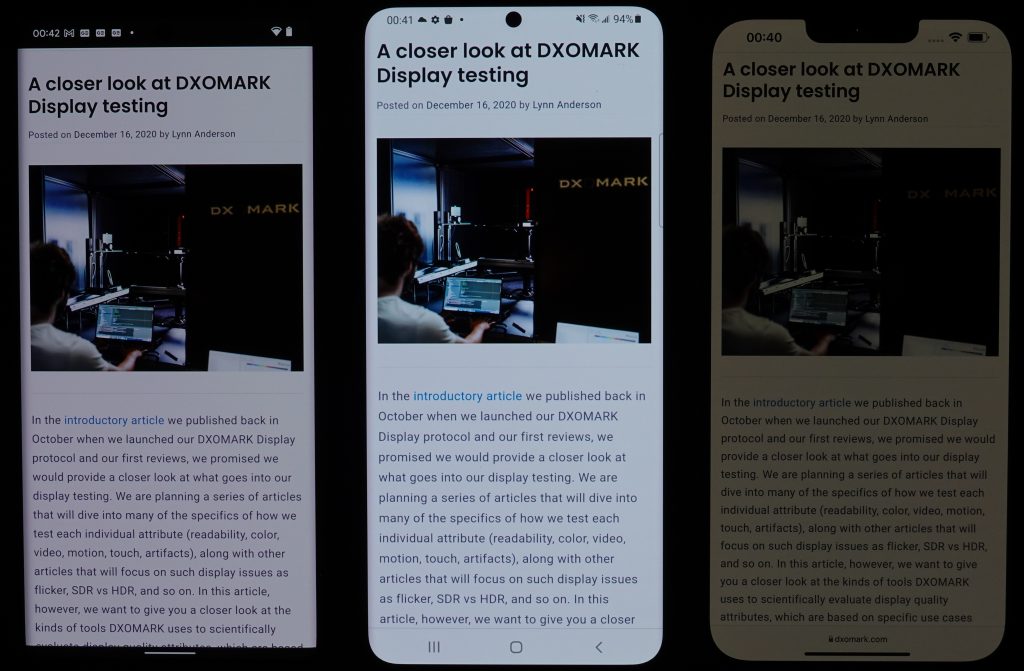

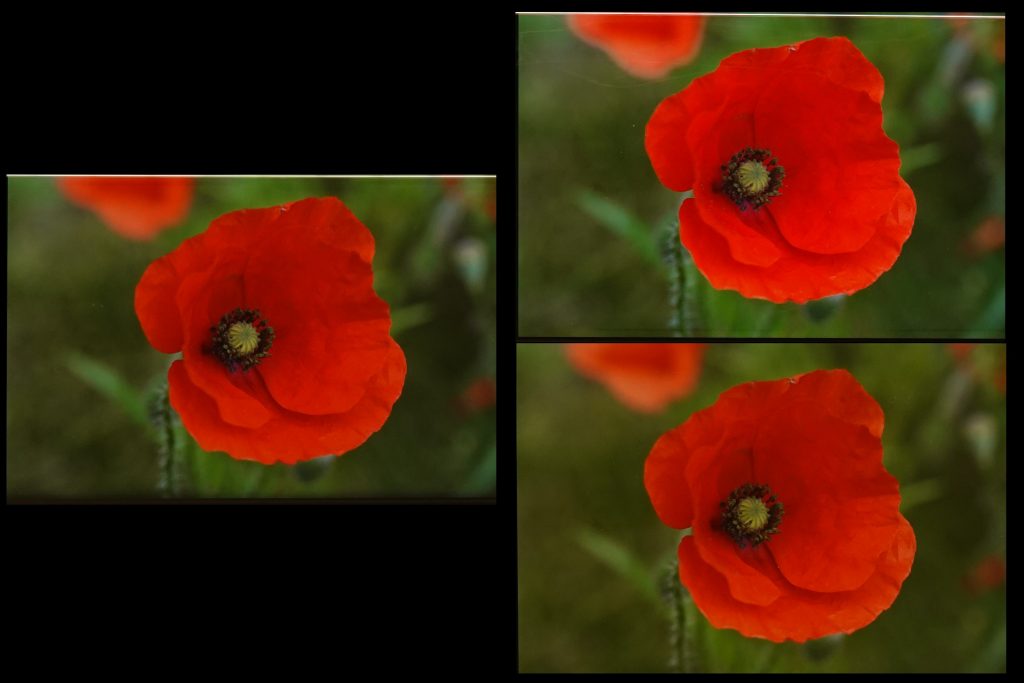


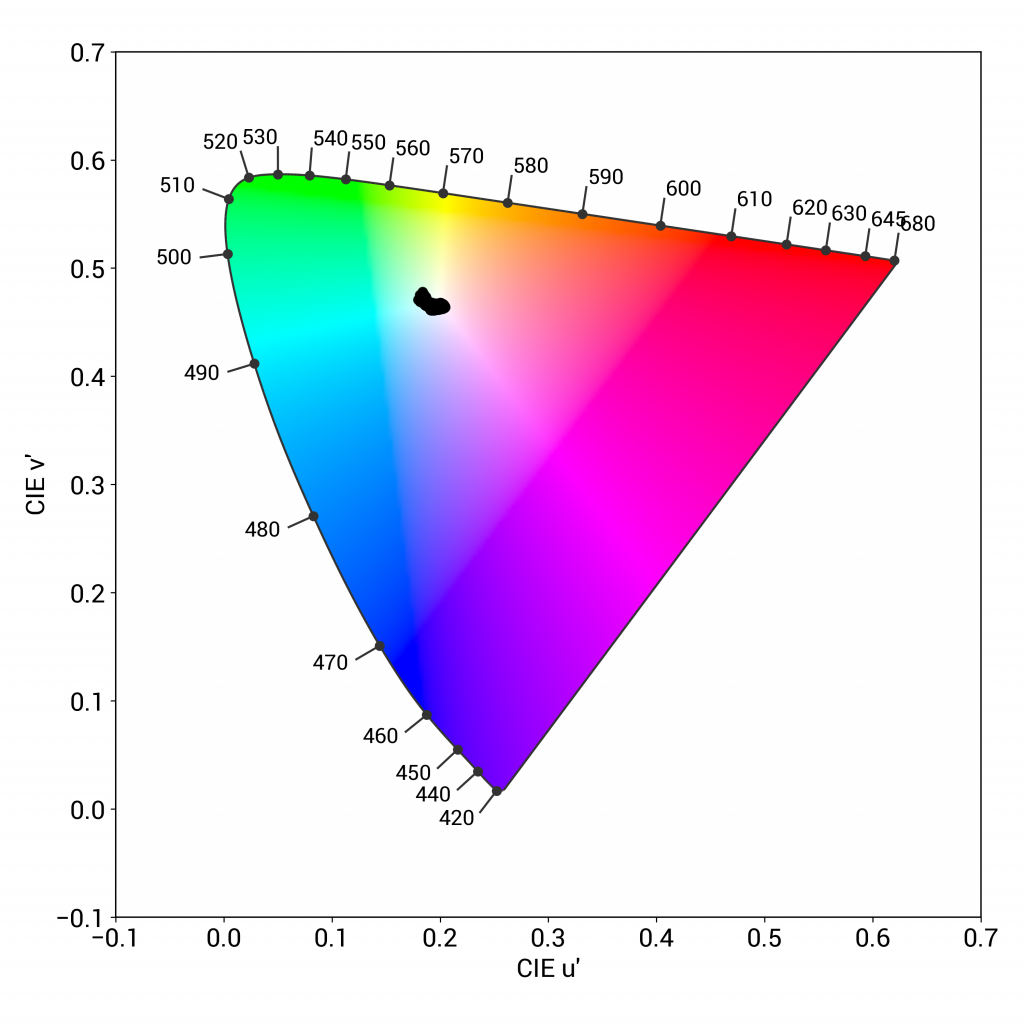
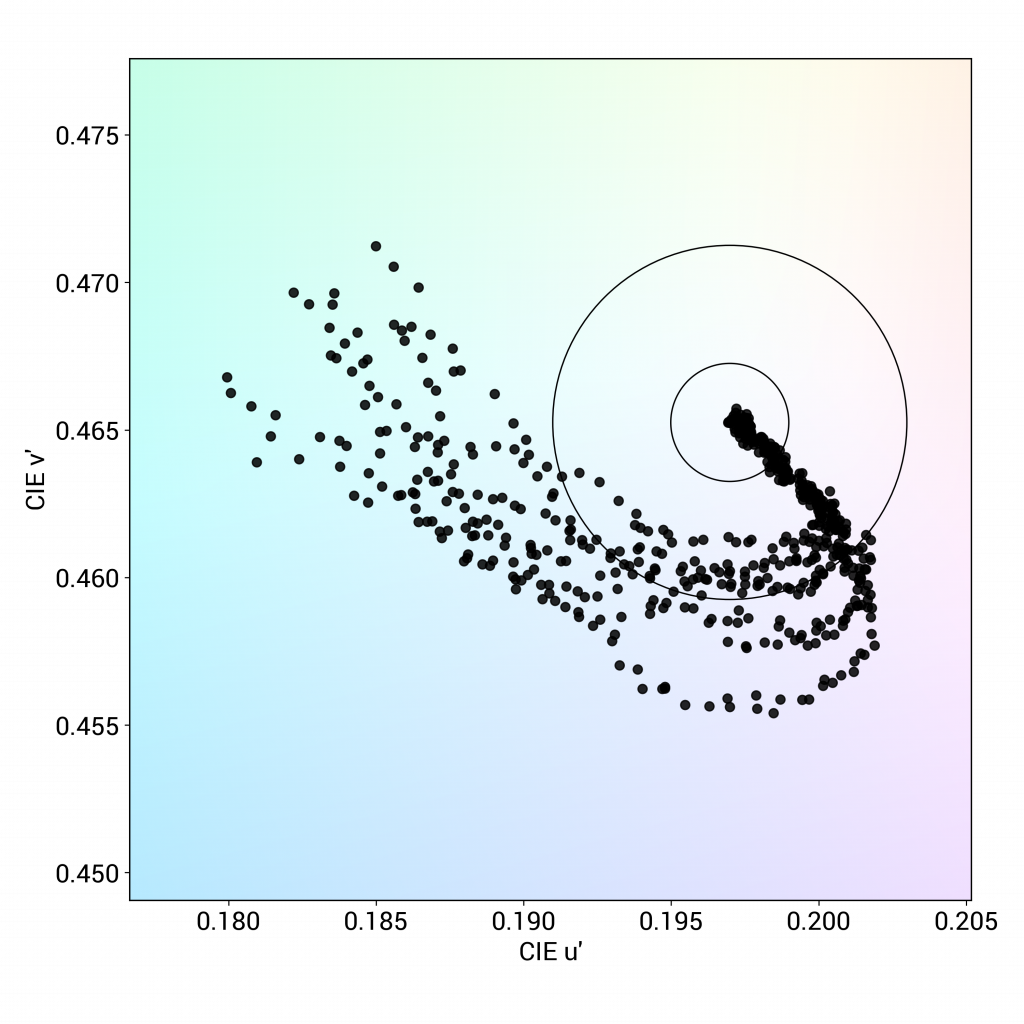


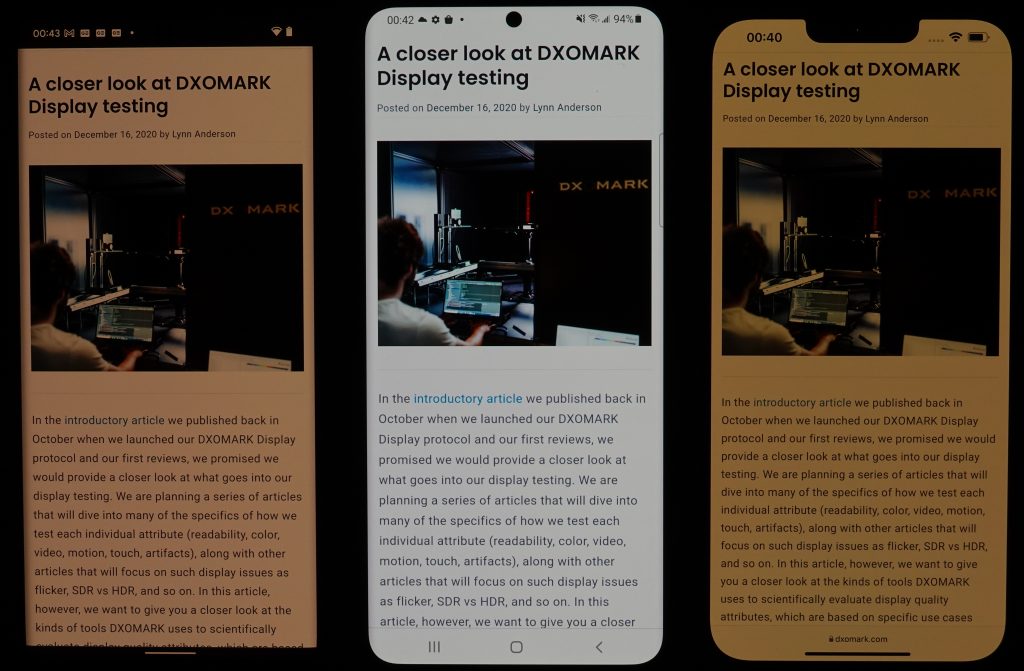
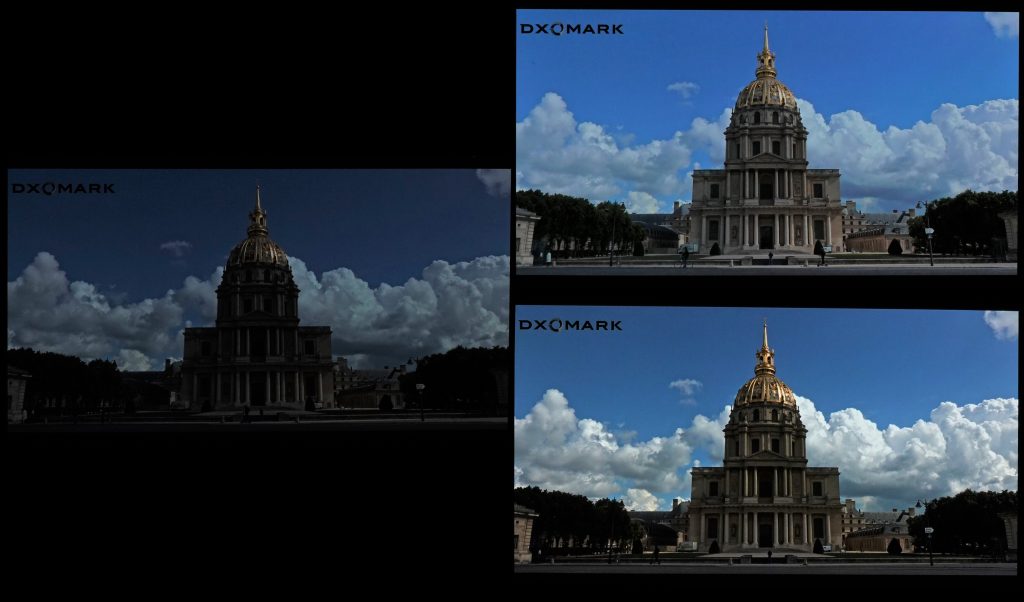




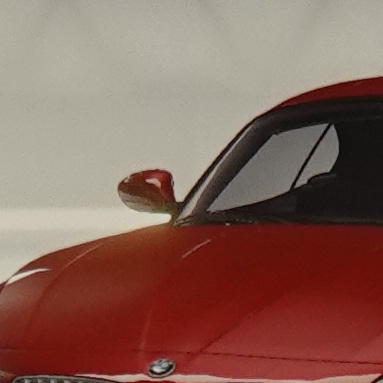
DXOMARK encourages its readers to share comments on the articles. To read or post comments, Disqus cookies are required. Change your Cookies Preferences and read more about our Comment Policy.